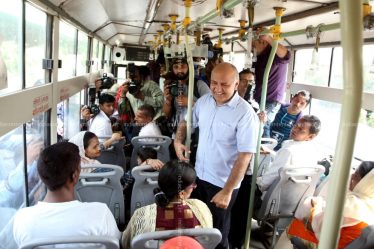
Three years ago, on 8 November 2016, Prime Minister Narendra Modi made the stock announcement of banning the use of old 500 and 1,000 rupee notes of the Mahatma Gandhi series with the aim of curbing black money, promote digital payments and make the country a less-cash economy. The Prime Minister also announced the issuance of new 500 and 2,000 rupee notes in exchange for the demonetised banknotes.
However, today, on the third anniversary of demonetisation, former economic affairs secretary SC Garg said the 2,000 rupee note, which the Modi government brought in 2016 were being hoarded and should be demonetised. He added that it could be demonetised, without causing any disruption. A simple method, depositing these notes in the bank accounts could be used to manage the process.

Demonetisation – All You Need To Know
The big and bold move by the government on 8 November, 2016 to abruptly wiping out the nation’s currency in hopes of ending black money and corruption put the country people in huge trouble. The country witnessed huge rush at banks and ATMs to exchange old banknotes and withdraw new ones. Queues at banks and ATMs grew and many people suffered, especially the poor, who had no access to debit, credit cards or mobile wallets. Dozens of deaths were also linked to the rush to exchange the currency. The big move created major disruption throughout the economy.
According to a 2018 report from the Reserve Bank of India, around 99% of the demonetised banknote were deposited with the banking system and the banknotes that were not deposited were only worth 107.2 billion, which means the effort to remove black money from the economy went in vain, stated the leading analysts.
Initially, the step received support from many bankers and some international commentators. However, later, the move was criticise, and several protests, litigation, and strikes took place against the Modi government all over India. Several debates also took place regarding demonetisation in both houses of the parliament.

The plan to demonetise the 500 and 1,000 rupee notes was initiated around 10 months before the official announcement by Prime Minister. In May 2016, the Reserve Bank of India started preparing for new banknotes and confirmed the design of 2,000 rupee notes in August 2016. The printing of new banknotes started in October when the news stories of forthcoming new banknotes appeared in the media. On 27 October 2016, the Hindi daily Dainik Jagran published a report quoting RBI sources speaking of the forthcoming of 2,000 rupee notes alongside withdrawal of 500 and 1,000 rupee notes. On 21 October 2016, The Hindu Business Line also published a report on forthcoming 2,000 rupee note.
The Union Cabinet was informed about the plan on 8 November 2016 in a meeting called by PM Narendra Modi. Soon after the meeting, Modi announced the demonetisation in an unplanned live national televised address at 20:15 IST. He declared circulation of all old rupee notes of 500 and 1,000 of the Mahatma Gandhi series as invalid effective from the midnight of the same day, and announced the issuance of new 500 and 2,000 rupee notes in exchange for the demonetised banknotes.

Demonetisation Images on India Content
The India Content website has a good stock of demonetisation images. The pictures are available in three sizes—small, medium and large.
You can purchase various other content images from the https://www.indiacontent.in

